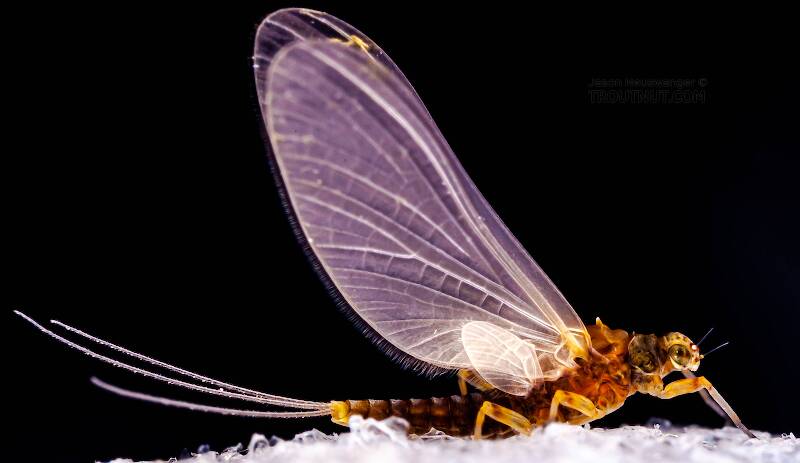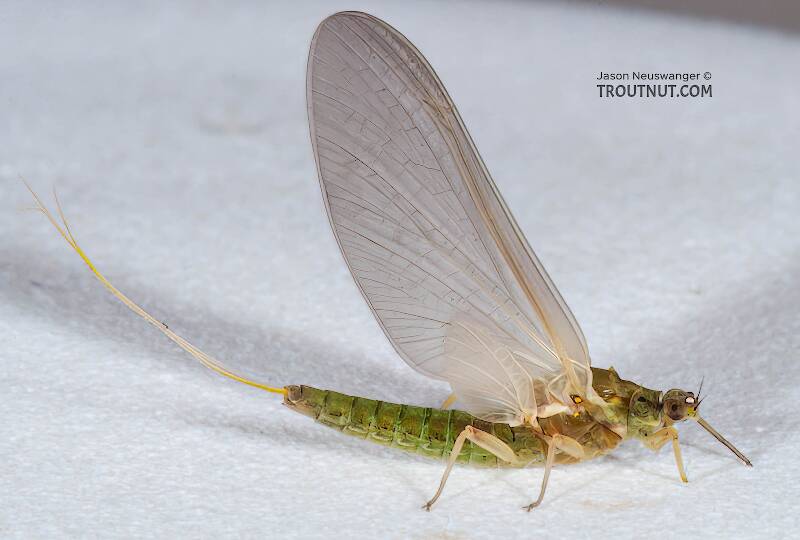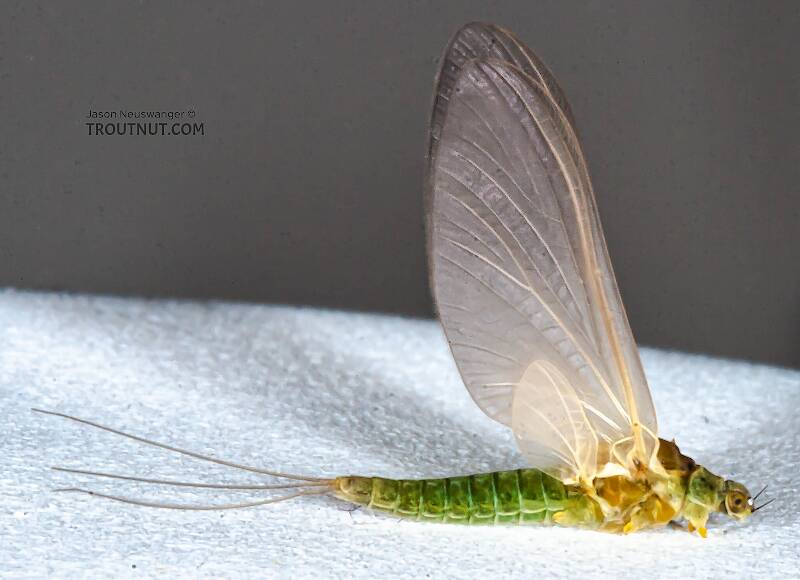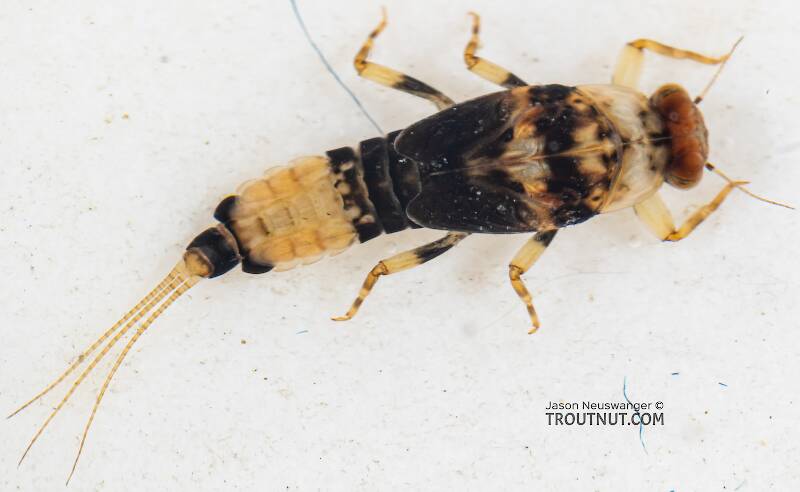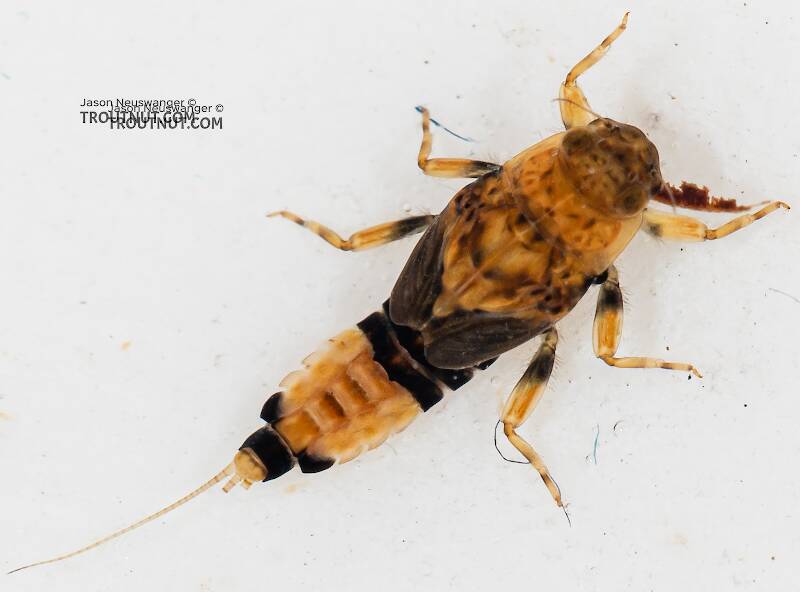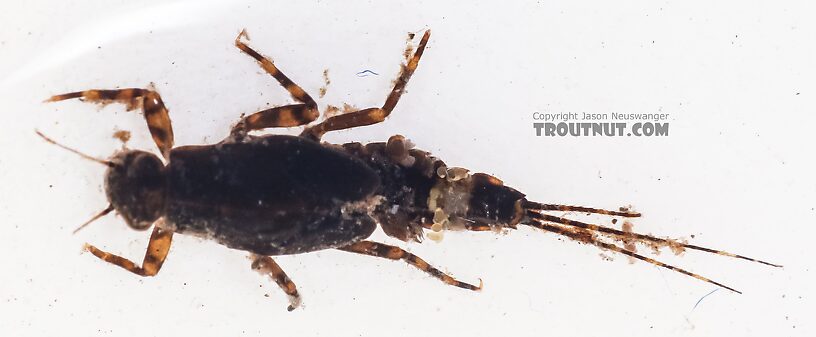
Blue-winged Olives
Baetis
Tiny Baetis mayflies are perhaps the most commonly encountered and imitated by anglers on all American trout streams due to their great abundance, widespread distribution, and trout-friendly emergence habits.
Featured on the forum

This specimen keys pretty easily to Onocosmoecus, and it closely resembles a specimen from Alaska which caddis expert Dave Ruiter recognized as this genus. As with that specimen, the only species in the genus documented in this area is Onocosmoecus unicolor, but Dave suggested for that specimen that there might be multiple not-yet-distinguished species under the unicolor umbrella and it would be best to stick with the genus-level ID. I'm doing the same for this one.

Troutnut is a project started in 2003 by salmonid ecologist Jason "Troutnut" Neuswanger to help anglers and
fly tyers unabashedly embrace the entomological side of the sport. Learn more about Troutnut or
support the project for an enhanced experience here.
Mayfly Genus Attenella
This genus is represented by several important species across the country. In the East, Attenella attenuata (Little Blue-winged Olive) has garnered much attention as an important hatch in past angling texts. However, possible confusion with more abundant Drunella species of Blue-winged Olives has perhaps led to overstatement regarding its importance.
The species Attenella margarita (Little Western Blue-winged Olive) is disributed nationally. Though its eastern presence is relatively minor, in the West this mayfly can produce exceptional hatches.
Two other western species, Attenella delantala and to a lesser extent Attenella soquele often show up quite prominently in stream samples taken in the coastal states. The dramatically marked delantala nymph cannot be easily confused with any other western ephemerellid. Information regarding their winged appearance seems to be unavailable for now. Why they have gone unreported in angling texts is a mystery perhaps due to emergence behavior or misidentification by anglers of the dun and spinner stages. There is much to learn about these species that can be fairly abundant in some locales.
The species Attenella margarita (Little Western Blue-winged Olive) is disributed nationally. Though its eastern presence is relatively minor, in the West this mayfly can produce exceptional hatches.
Two other western species, Attenella delantala and to a lesser extent Attenella soquele often show up quite prominently in stream samples taken in the coastal states. The dramatically marked delantala nymph cannot be easily confused with any other western ephemerellid. Information regarding their winged appearance seems to be unavailable for now. Why they have gone unreported in angling texts is a mystery perhaps due to emergence behavior or misidentification by anglers of the dun and spinner stages. There is much to learn about these species that can be fairly abundant in some locales.
Genus Range
Hatching behavior
A significant difference between this genus and other ephemerellids is it's reported propensity to emerge from its nymphal shuck from the stream bottom in heptagenid fashion. While other ephemerellids can and do emerge underwater, this usually takes place within a foot at most from the surface. Attenella's availability as a submerged dun in the entire water column means use of the winged wetfly or soft hackles fished deeply can be an important tactic.Specimens of the Mayfly Genus Attenella
1 Male Dun
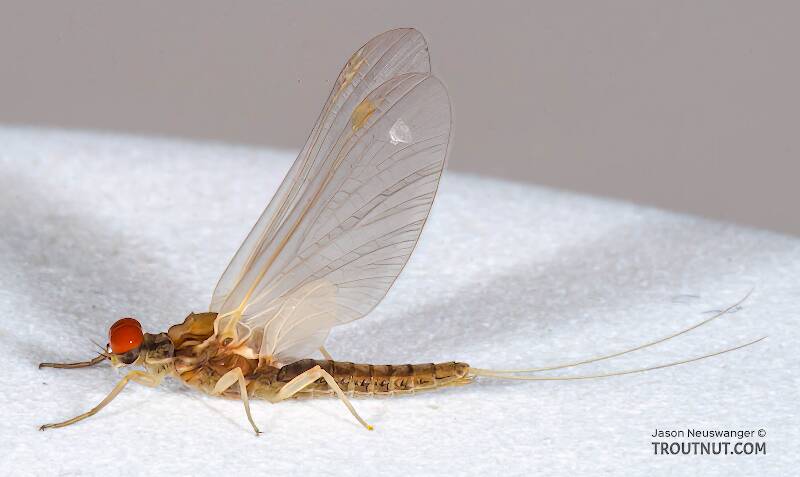
This specimen came from the same hatch as a female.
3 Female Duns
3 Nymphs
Start a Discussion of Attenella
References
- Knopp, Malcolm and Robert Cormier. 1997. Mayflies: An Angler's Study of Trout Water Ephemeroptera . The Lyons Press.
Mayfly Genus Attenella
Taxonomy
Species in Attenella
Attenella attenuataSmall Eastern Blue-Winged Olives
3
11
Attenella delantalaLittle Blue-Winged Olives
2
15
Attenella margaritaLittle Western Blue-Winged Olives
2
13
1 species (Attenella soquele) isn't included.


